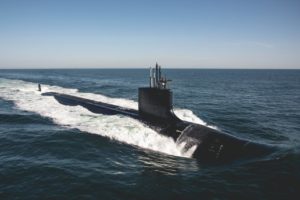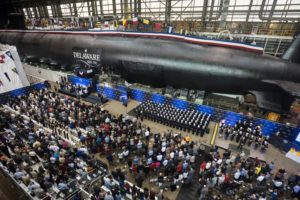SSN(X)
-
 Navy/USMC
Navy/USMCSSN(X) To Feature Many Torpedoes, Official Says
The SSN(X), the Navy’s planned next-generation nuclear-powered attack submarine, will feature many torpedoes in a focus on deeper blue water naval combat roles, an official said last week. The Navy […]
Tagged in: -
 Navy/USMC
Navy/USMCNavy Official Calls SSN(X) The ‘Ultimate Apex Predator’
A Navy official this week called the next-generation nuclear-powered attack submarine, SSN(X), an apex predator that will combine the best capability and technologies from three earlier designs. “We are looking […]
Tagged in: -
 Navy/USMC
Navy/USMCNavy Examining Three SSN(X) Hull Options
The Navy’s commander of the submarine forces said the service is looking at three tracks for SSN (X), the next generation attack submarine: using the Virginia-class attack submarine, Columbia-class ballistic […]
Tagged in:
